Realtor Marketing Materials
The transition to the digital age and online platforms has revolutionized the way we market. However, amidst the vortex of online activity, agents shouldn’t forget the importance of offline (aka IRL) marketing. After-all properties are offline so it stands to reason that agents should save some of their marketing bandwidth for offline, real-world marketing.
Today’s blog post underscores the value of print marketing to engage prospects and present a compelling brand – which for many successful agents has been every bit as crucial as amassing an online following. But we’re not going to pull any punches. Some printed materials are no longer necessary for a modern real estate agent.
Here we will go over the key realtor marketing materials for agents to consider in their advertising and outreach…and we’ll categorize them based on their relevance for today’s consumer.
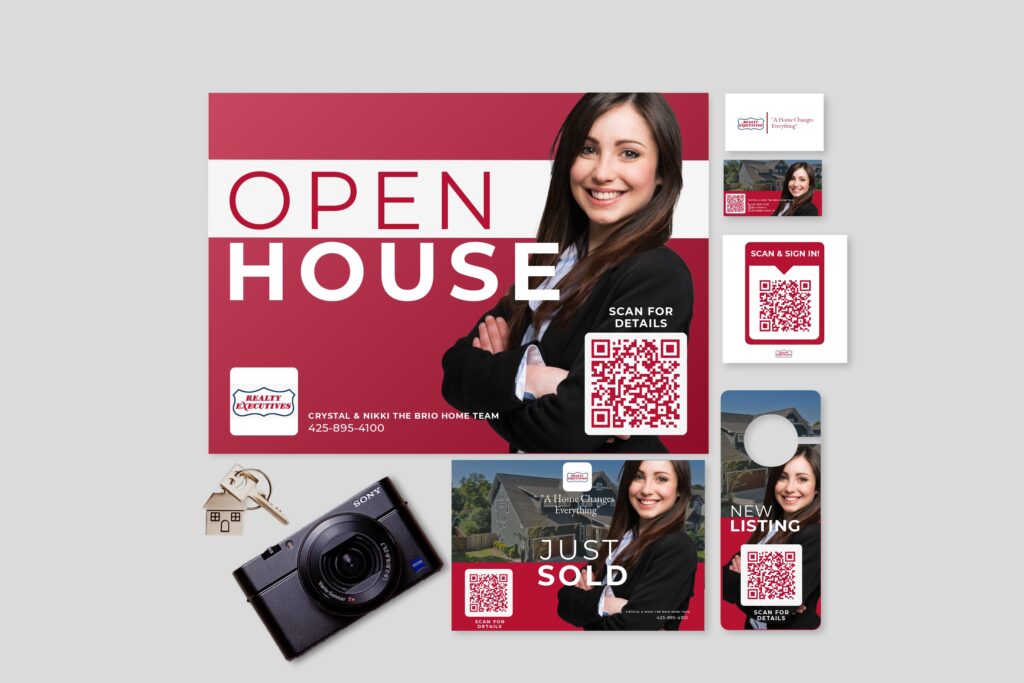
Here’s what we’ll cover:
- Real Estate Flyers
- Real Estate Postcards
- Thank You Cards
- Promotional Items
- Real Estate Signs
- Door Hangers
- Real Estate Business Cards
- Real Estate Brochures
- Listing Presentations
Real Estate Flyers
Flyers are great for any real world interactions where you’ll have limited presence (or no presence at all). Granted, “a real estate flyer” is a generic term and there are tons variations possible whether it’s a new property on the market, an upcoming Open House, a recent sale, a market report for the neigborhood, a real estate related event (ex: a new home buyer workshop) or really anything that an agent chooses to promote to their client base. We’ve got a deep dive specifically luxury market real estate flyers but regardless of market or use-case, real estate flyers should be professionally designed to reflect the agent’s brand, with clear, compelling content that speaks directly to the interests and needs of the target audience. Including a call to action is crucial for encouraging potential clients to take the next step, whether that’s reaching out for more information, attending an event, or scheduling a consultation.

One other note is that real estate flyers, while traditionally thought of as offline marketing assets, can be modernized with a QR code which bridges the gap between physical and digital marketing.
Below we’ll cover some of the most common use cases:
1. Real Estate Geographic Farming
Use Case: Geographic farming involves focusing marketing on a geographic area or neighborhood to establish themselves as the go-to agent in that area. The goal is to become the authority in the local real estate market and the marketing materials involved typically include any type of development related to properties in the neighborhood: Coming Soon, For Sale, Open House, Under Contract, and/or Sold. The neighborhood market report is another common use case.
Flyer Design and Content: Flyers for geographic farming should highlight the agent’s knowledge of the local market, including recent listings/sales, market trends, and other useful information about the community, such as upcoming local events to demonstrate the agent’s deep connection and commitment to the area. Flyers should include the agents info and a call to action, like a comparative market analysis.
2. Home & Garden and Bridal/Wedding Conventions
Use Case: These “stage of life” events can be great to target attendees who may be in the market for buying a new home and these events provide a unique opportunity to connect with potential clients in a more personal setting.
Flyer Design and Content: For these conventions, flyers should focus on how the agent can meet the specific needs of the audience, such as finding the perfect starter home for newlyweds or first time home buyer tips, or how to maximize outdoor living space. And of course alongside this content, include the agent’s contact information and social media handles.
3. Community/Charity Events Flyers
Use Case: Participation in community or charity events demonstrates an agent’s commitment to giving back to their community. These events are an excellent way to build trust and establish a positive reputation within the community.
Flyer Design and Content: Flyers for community or charity events should emphasize the agent’s involvement and support for the cause, along with any community service or sponsorships. The content can include details about the event, how it benefits the community, and other similar events that the agent is participating in. This is also an opportunity to softly integrate the agent’s services by highlighting their community ties and dedication to the area’s well-being, making sure the primary focus remains on the event and the cause.
Note: One case where flyers don’t make the most sense is flyers/brochures for visitors at an Open House. We have a deep dive into Open House flyers here but the rationale is that visitors at an Open House can get the property details digitally – which means MUCH more content can be shared as well as interactive features like virtual tours. This has the added byproduct of giving agents a clear reason to get the visitors contact info using an app like Curb Hero (which is free btw!)
In conclusion, real estate flyers should elevate local and in-person marketing efforts and extended reach beyond online platforms…providing relevant content designed for a specific type of prospect.
Real Estate Postcards
An Oldie but Goodie. This use case is entirely related to geographic farming (also covered in the section above).
Real estate postcards are a traditional yet effective marketing strategy for agents looking to establish and maintain a presence within a specific geographic area or “geographic farm.” These postcards serve various purposes, from announcing new listings to sharing market insights. Below are summaries of the key use cases for sending real estate postcards to a geographic farm:
1. Property Coming Soon
Purpose: To generate interest and anticipation for a property that will soon be available on the market.
Content Strategy: The postcard should feature a high-quality image of the property, with text highlighting its most attractive features or unique selling points. A “Coming Soon” headline should be prominent, along with agent contact info for eager buyers to learn more. This creates a sense of urgency and exclusivity, encouraging potential buyers to act quickly. Also keep in mind realtor/MLS association’s rules when it comes to marketing properties as “Coming Soon”.
2. Property For Sale
Purpose: To notify the community about a new listing and attract potential buyers or individuals who might know potential buyers.
Content Strategy: This postcard should include professional photos of the property, a brief description, and key details like the number of bedrooms and bathrooms, square footage, and unique amenities. The agent’s contact information should be clear and easy to find. Highlighting any special features of the property or the neighborhood can make the postcard more compelling.
3. Upcoming Open House
Purpose: To invite the neighborhood and potential buyers to view the property in person.
Content Strategy: The postcard should specify the date and time of the open house, along with any key details about the property. Including a striking image of the property and a brief teaser of what attendees can expect to see can increase interest and attendance. Mentioning a theme or special attractions at the Open House (especially if doing a Mega Open House) can also be an effective way to boost attendance.
4. Property Under Contract
Purpose: To inform the geographic farm that the property is in the process of being sold, demonstrating the agent’s effectiveness and success in the local market and building anticipation for a new neighbor (and a new comp on the market).
Content Strategy: This postcard should announce that the property is under contract and provide a timeframe for the sale if possible. It can subtly highlight the agent’s role in securing the deal, reinforcing their expertise and success rate in the area. A call to action, encouraging homeowners to contact the agent if they’re considering selling their home, can capitalize on this success.
5. Just Sold
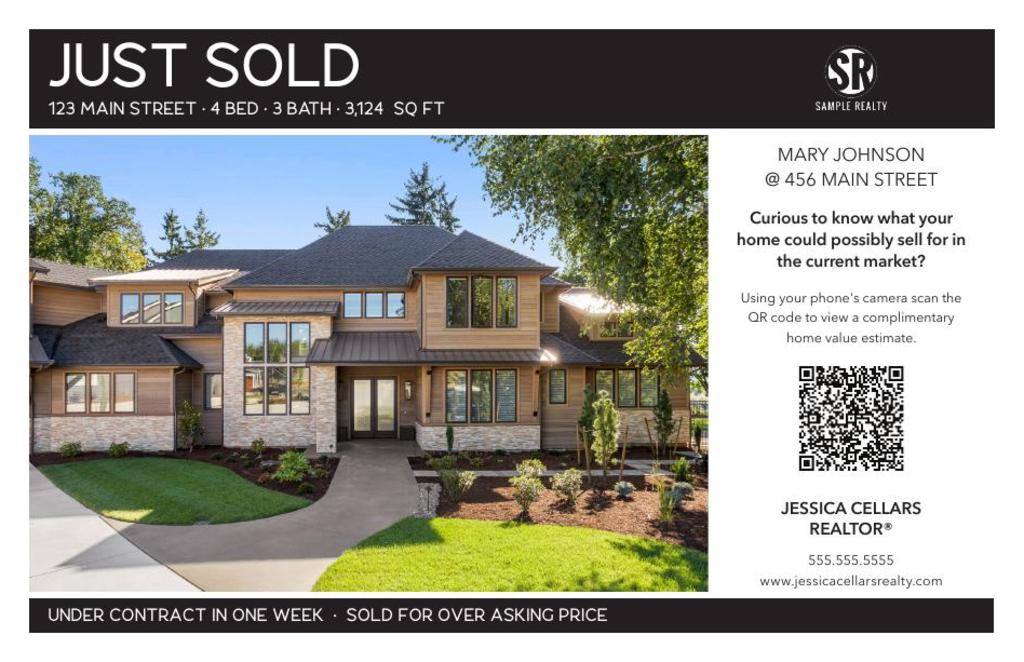
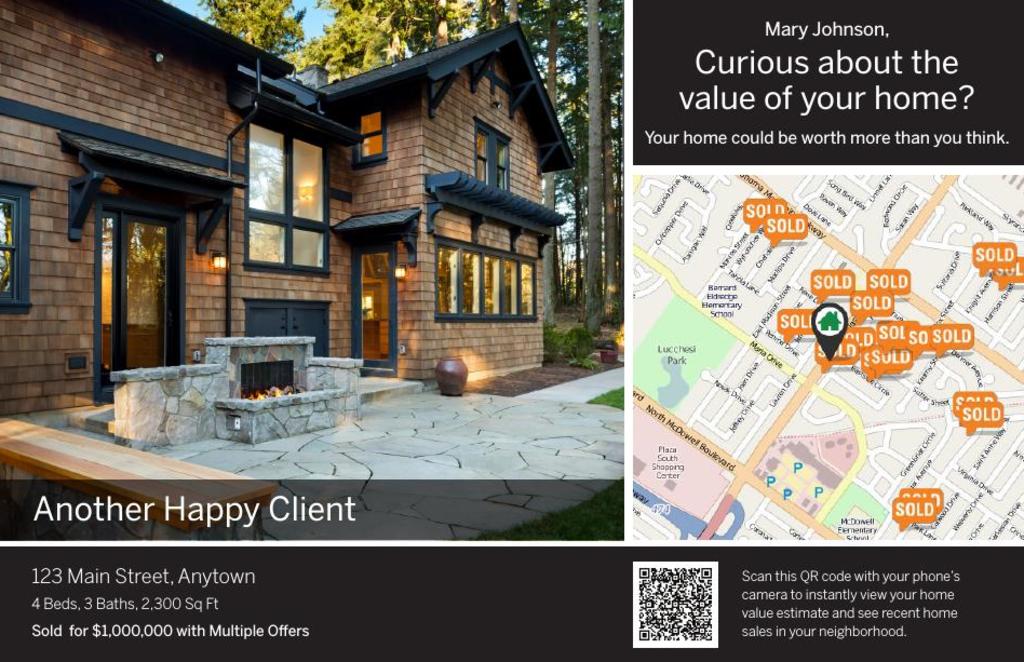
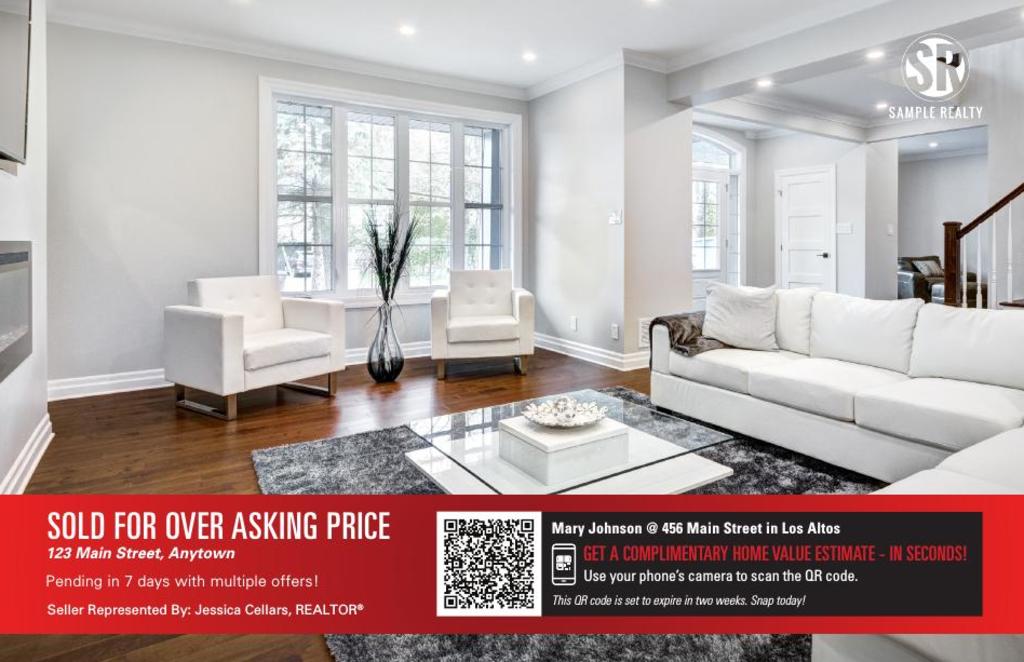

Purpose: To announce the successful sale of a property, showcasing the agent’s ability to close deals and encouraging other homeowners to consider selling.
Content Strategy: The postcard should include the sale price (if appropriate) and how quickly the property sold, emphasizing the demand in the area and the agent’s efficiency. Including a testimonial from the seller or buyer can add a personal touch and build trust within the community. Tying a circle prospecting campaign to this post card send can be a good one-two punch to get new seller leads.
For much more info, check out deep dive into Just Sold Post Cards here
6. Neighborhood Market Report
Purpose: To provide valuable information on recent sales activity, trends, and the state of the local real estate market, positioning the agent as a knowledgeable resource.
Content Strategy: This postcard should include a summary of market activity, such as the number of properties sold, average sale prices, and any notable trends in the local market. Graphs or charts can make the data more accessible, and a brief analysis can help homeowners understand how these trends might affect their property’s value. Encouraging recipients to contact the agent for a more detailed CMA report (check our article on CMAs tools here) or consultation can generate leads and establish the agent’s expertise.
7. Thank You Card
Purpose: To express gratitude towards clients or referral partners fostering long-term relationships and encouraging referrals and repeat business.
Content Strategy: The Thank You card should convey genuine appreciation in a personal and heartfelt manner. It can be sent after a successful transaction, an buyer/seller consultation, referral, or any interaction where gratitude is warranted. The message should be customized to the recipient, mentioning specific aspects of your interaction to make it more personal. Including a business card or a small token of appreciation, like a gift card to a local business, can enhance the gesture. A soft call to action, such as asking the recipient to keep you in mind for future real estate needs or to refer you to friends and family, can be included in a non-intrusive manner. The design of the card should reflect the professional brand of the agent while also conveying warmth and sincerity.
For each of these use cases, the design and message of the postcard should be aligned with the agent’s brand and tailored to the interests and preferences of the target geographic farm. By effectively using real estate postcards for these varied purposes, agents can enhance their visibility, build relationships, and ultimately drive more sales within their chosen geographic farm.
An option many agents consider when sending post cards to a targeted geo is EDDM postcards by USPS.
Personalizing Real Estate Marketing Materials
There’s no denying the charm of a personalized letter or postcard. It can be the difference between a piece of marketing being read vs immediately getting filed in the circular file folder 🗑.
While digital marketing is very easy to personalize (just rub a little “merge field” on it!), real world marketing materials aren’t as easy to customize for each recipient.
However that’s part of the magic when you can offer a unique touch in your marketing materials.
One service that can blend the scale and automated aspects of digital marketing while keeping the personal touch of a handwritten note is Handwrytten. They use robots with pens to write custom messages to your prospects. Not only can you use the person’s name but the message will look like you spent the time handwriting the message! Use the code CURBHERO and you’ll get a $25 credit to start you off on your personalized marketing journey.
Promotional Items
What would a real estate agent be without their branded pen and notepads right? Go to any kitchen counter in a suburban neighborhood and there’s a good chance you’ll find a pad of paper branded with the go-to agent for that neighborhood.
While there’s a slight “cheese factor”, everyday commodities like pens, notebooks, and water bottles can subtly reinforce your brand in your clients’ daily lives. What’s more, these items are not just any random giveaways; they are tangible assets representing your brand, growing brand visibility bit by bit each time they’re picked up and used. Therefore, choosing accessories that your potential customers are likely to use day-in, day-out can greatly enhance your prospect of staying at the top of their minds. We’ve got an article that covers real estate swag in depth here, but here’s a sneak peek of the inspo you’ll find.

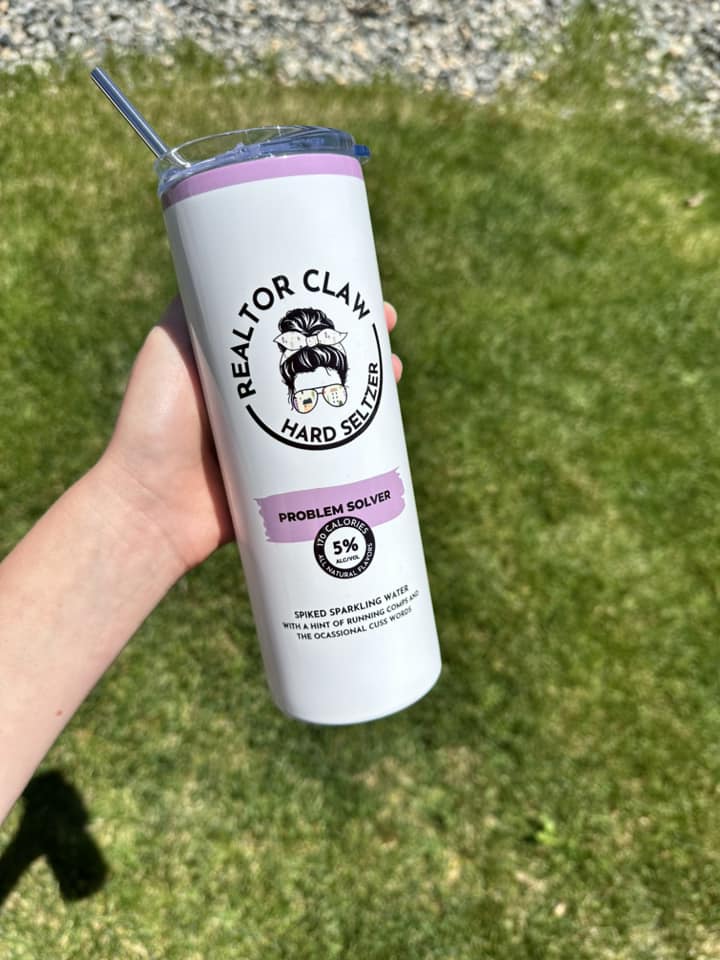
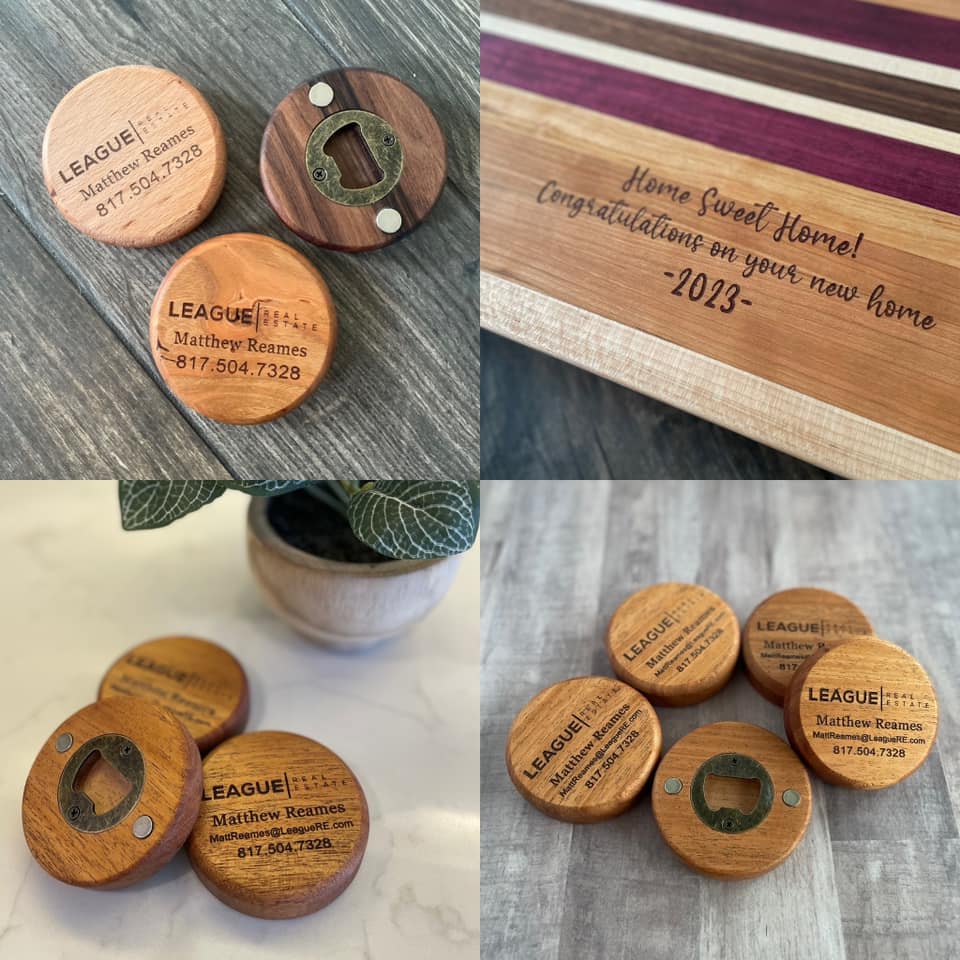
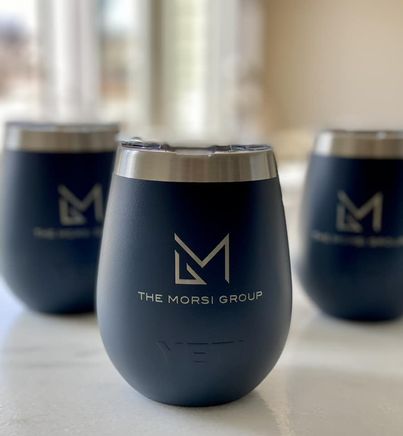
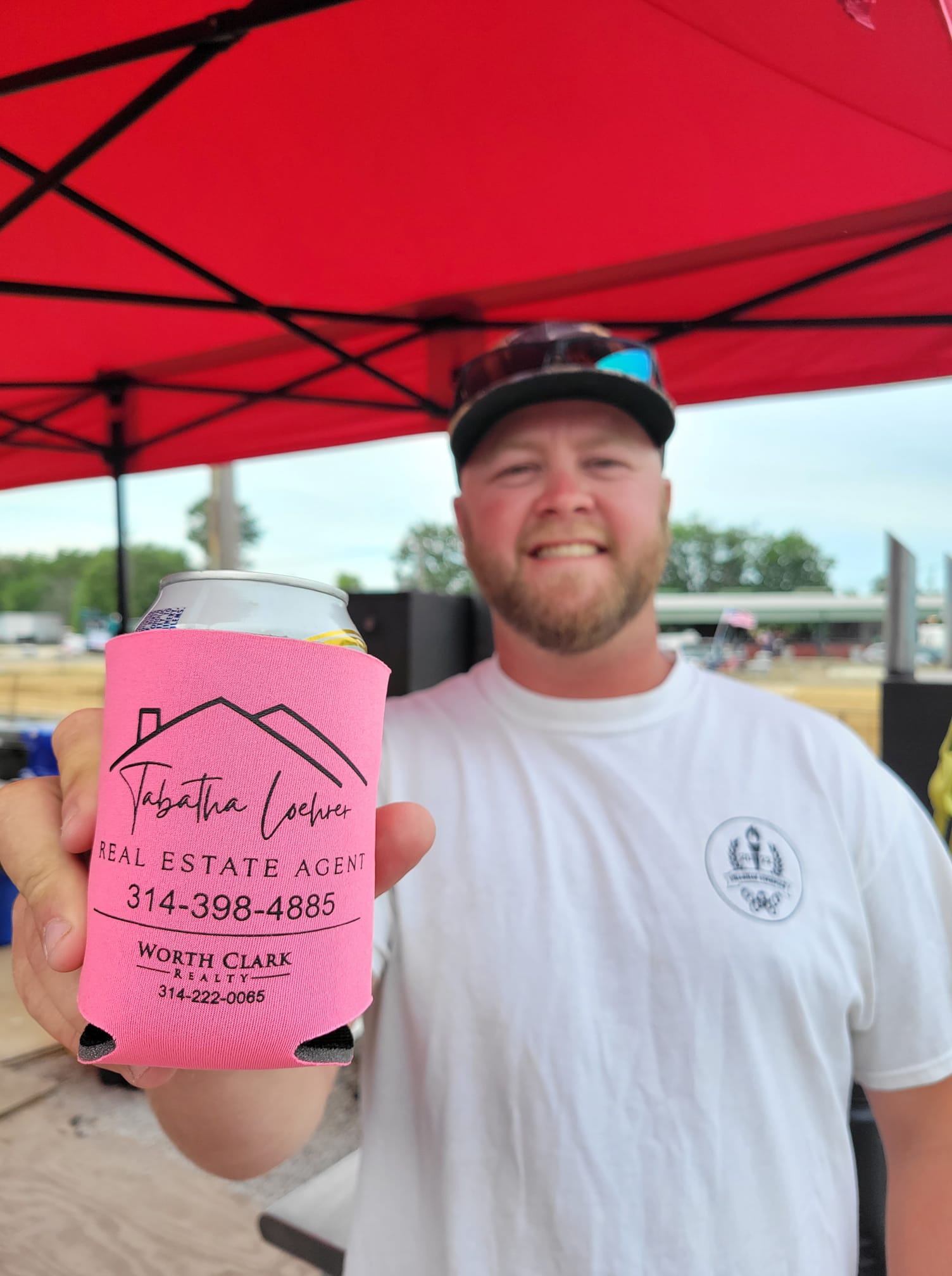
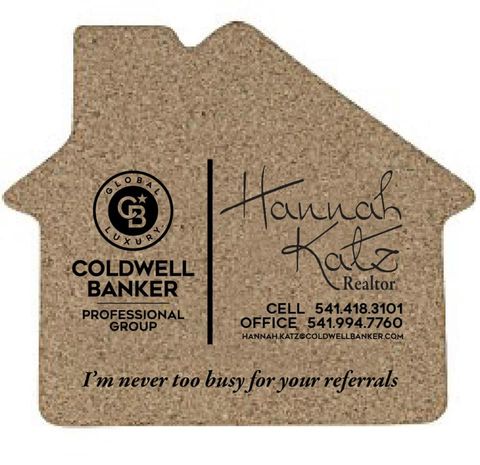
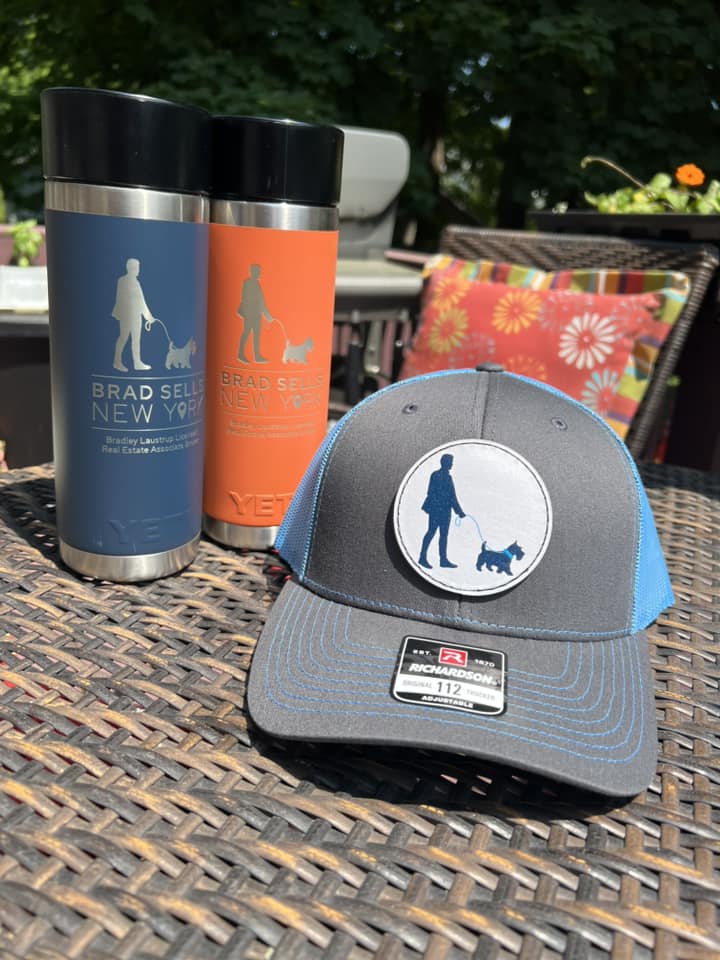
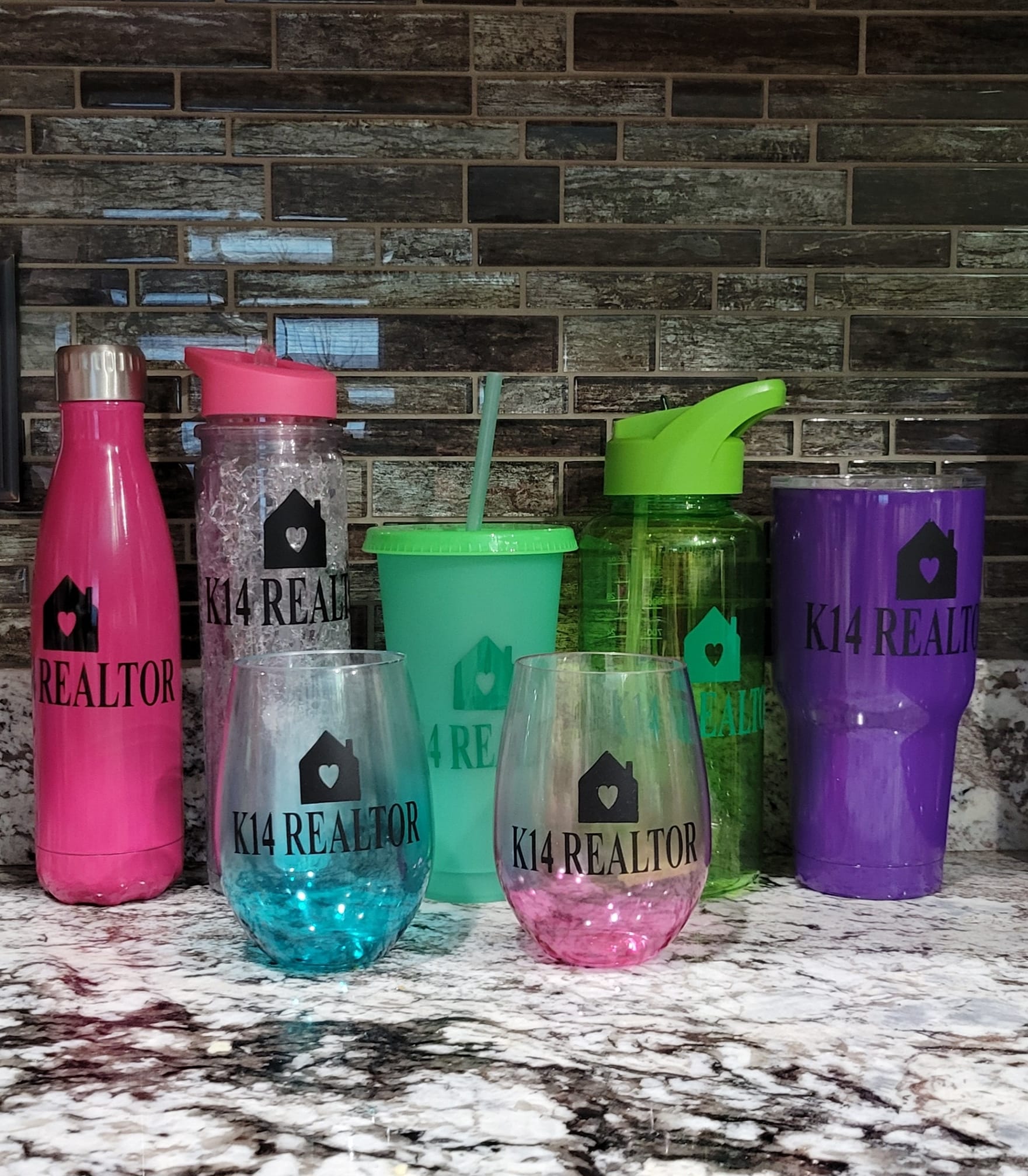
The main thing when it comes to including swag in your marketing materials is leveraging the power of practicality. Including these promotional items lets you cleverly infiltrate your clients’ typical day — your brand subtly catching their attention with each sip from the water bottle or every time they open that branded notebook to jot down something important. Such daily engagement with branded items can create touch points, thereby nurturing a unique bond between your brand and your clients.
Real Estate Yard Signs and Open House Signs
Local Sign Ordinances aside, you can never have too many Open House Signs. These low-tech tools are surprisingly efficient in catching local interest and bringing customers literally to your listing’s doorstep.

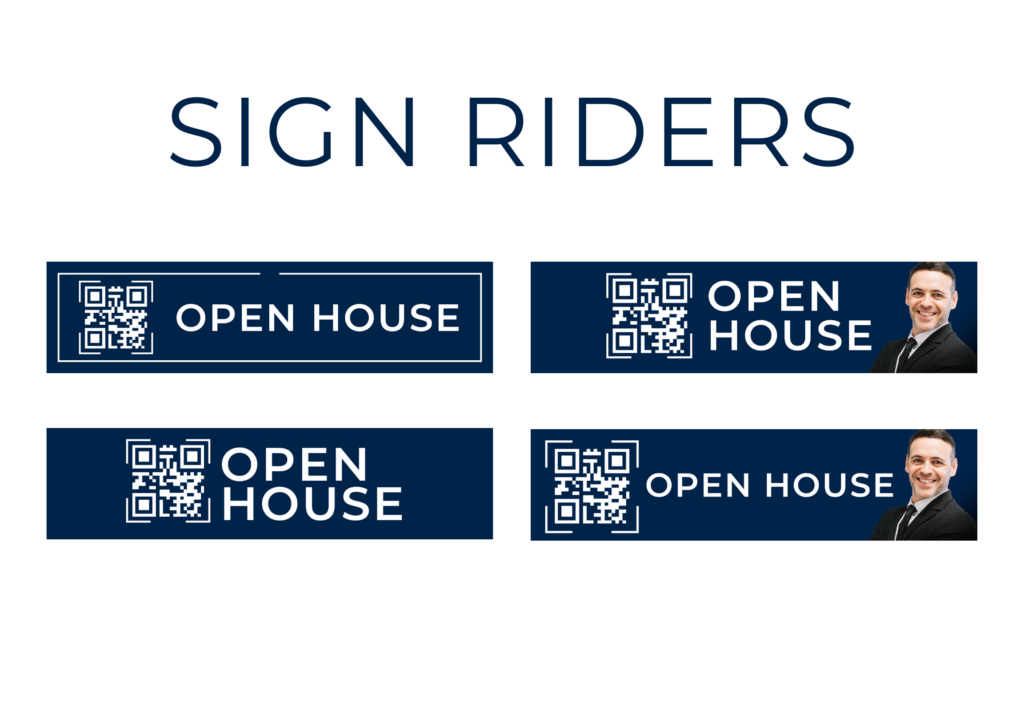


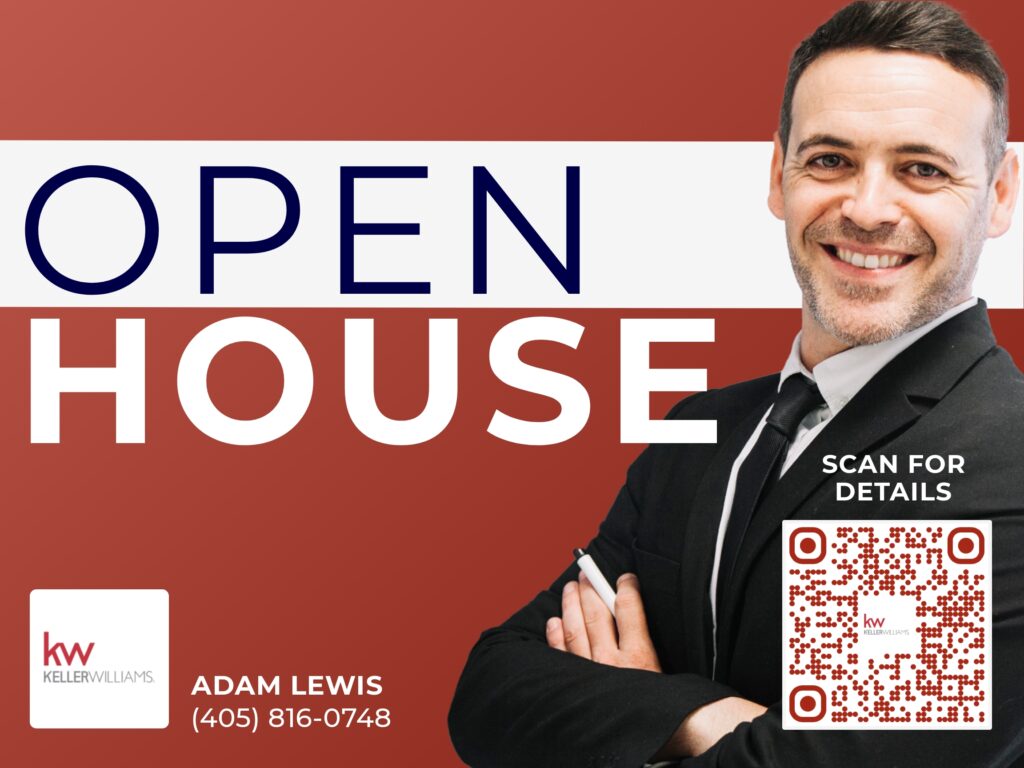
The key design elements of these signs revolve around phenomenally simple principles – visibility and brand consistency. When considered as complements to digital outreach, the impact of real estate signs is further magnified. And using a QR Code is a great way to bridge these offline eyeballs into online prospects.
Door Hangers
Let’s turn our attention to an often-overlooked component in the arsenal of marketing materials: Door Hangers.
Here’s the two-part magic of a real estate door hanger
- You’re literally attaching your brand to the property that you are hoping to sell
- The door hanger is usually announcing an occurrence/event that will have a material effect on the property’s value (ex: a nearby home that hit the market)
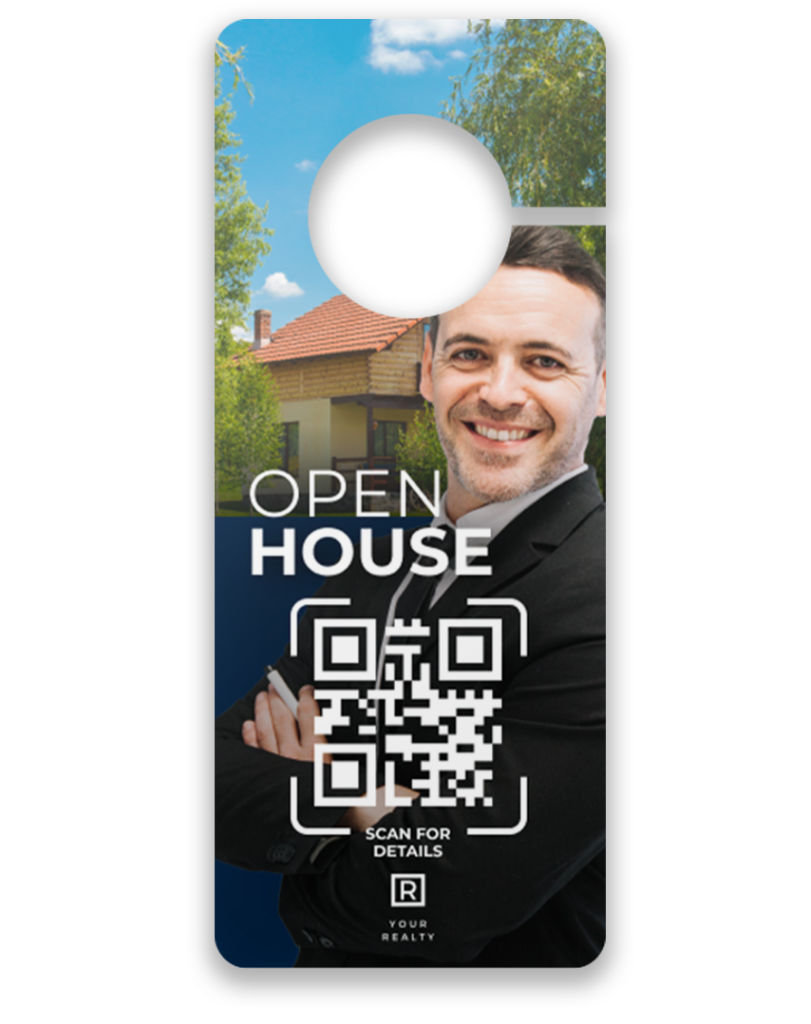
This is their distinct edge. Plus they can also offer a personal touch and humor. Check out deep dive on door hangers here.
Real Estate Business Cards
If there was ever a question on the relevance of business cards, just try and find the rolodex on your desk or anywhere in a modern office.
The days of ordering a box of business cards to have at the ready for an upcoming networking mixer are gone but that doesn’t mean that business cards is entirely dead. There are still some business case needs that agents may want to plan for:
- the leave behind: are you attending events or visiting offices where you’ll be dropping off other printed materials like a first time home buyer tip sheet? If you don’t have your contact info included on the main content, stapling a business card is a great way to make sure recipients have your info.
- the “tappable” (or scannable) business card: nowadays there are tappable, scannable “business cards” that you can use to exchange info. While these can take the form of a typical business card, these aren’t handouts – they’re meant to be returned to you after the recipient saves your digital info.
- luxury business cards: in some select occasions you may be engaging with higher end clients or business partners and pulling out a phone to grab contact info may not feel appropriate. In these rare cases having a handful of high quality real estate business cards can be a good move.
So while business cards are no longer required they do have some select use cases. Whenever possible though, try and save the contact info digitally as it will improve retention and follow up for everyone!
Real Estate Brochures
In an increasingly digital world, the real estate brochure is unfortunately facing declining relevance. The reason is two fold (pun intended!).
- They are expensive to produce and print. Especially if you want to use high quality materials and printing to give the feeling of a true luxury real estate flyer
- They are limited in terms of the information that can be conveyed and have no interactivity. Nowadays a property website includes 50+ images, videos, virtual tours, interactive floor plans, analysis on pricing and the neighborhood and much more. And a property website can be accessed easily from anywhere. The brochure doesn’t even come close to matching the content delivery, engagement, and convenience.
Real estate brochures have occupied a strong position in the arsenal of realtor marketing materials, but unless you know that your market expects an expensive printed asset like this, it’s probably worth skipping. Instead re-allocate that budget on a few more signs and door hangers.
The varied options for realtor marketing materials reflects the varied campaigns that agents employ in their business. Beyond just being a vehicle for your brand, print and offline marketing can serve as educational tools, lead magnets, as well as personalized gestures to prospects. These assets can be used for prospecting touchpoints of all types providing constant opportunities to reinforce your value proposition and differentiate from your competition.



